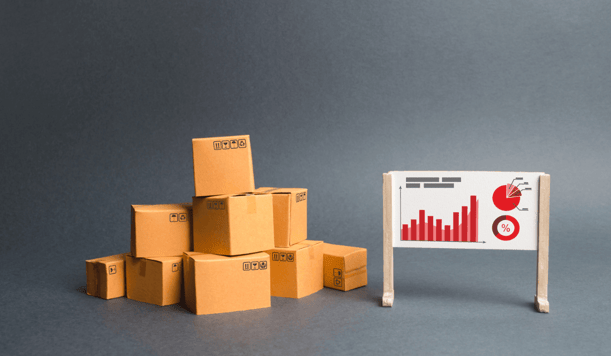
Interesting times are ahead for companies that purchase significant pulp and paper volumes, a group that includes virtually any manufacturer with packaging needs. According to the US Bureau of Labor Statistics Producer Price Index, from February 2020 to February 2021, pulp and paper prices increased more than 5%. Data published by the St. Louis Federal Reserve Bank shows that corrugated prices increased approximately 11.5% between September 2020 and March 2021. These price increases will soon show up in packaging costs...if they aren’t already.
Moreover, the rapid growth of e-commerce is driving fundamental changes to packaging models. What used to be one box of 24 items shipped to a single retailer is now often 24 separate packages sent to individuals located at various points across the country or globe. Forecasts show these trends will persist as consumers continue to become accustomed to the convenience of online and remote shopping ... which means procurement officers are looking for innovative solutions to these rapid changes.
For manufacturers, forces are aligning to drive packaging costs upward. First, underlying commodity prices for pulp and paperboard are rising faster than in the recent past, causing increases in per-unit packaging costs. Add to this the significant increase in packaging unit volumes brought about by changes in consumer shopping habits, and manufacturers are facing steep cost increases across their packaging operations. The key to facing these challenges is effective contract negotiations to ensure supplies and secure pricing stability.
Why Packaging Costs Matter
Until January 2017, an extended period of price stability in paper commodities enabled manufacturing professionals to concentrate on process changes driven by e-commerce. Price relief during 2019 helped, but recent price increases and changing consumer buying practices are bringing renewed focus to packaging prices. Manufacturers across the board will now need to contend with these factors simultaneously, and for all but the grizzled veterans, dealing with a spiraling cost environment will be an unfamiliar test.
Even those who have been in the field for dozens of years or more will face new challenges as consolidation across pulp and paper producers combined with the closure of inefficient plants has reduced capacity and altered the competitive landscape. Consequently, negotiating the best possible price is no longer sufficient. It is also necessary to secure a reliable supply of packaging material. Imagine the awkward conversations that could ensue if sales are lost because the product is ready and lined up, but no boxes are available to ship it.
It is imperative to understand the pricing formulas underpinning packaging costs, as well. In most cases, these equations incorporate inputs such as the RISI index to account for commodity price changes. This is a logical approach because producers should not be penalized for market factors beyond their control. However, it takes a trained eye to deconstruct these formulas and ensure they don't introduce price creep by codifying cost increases in other areas that may well be declining.
Evening Out the Knowledge Imbalance
Manufacturing professionals cannot know as much about pulp and paper market dynamics as the vendors who are steeped in its details daily. For this reason, enlisting a third-party subject matter expert during the vendor contract negotiation process can level the playing field and pay significant dividends; in some cases, manufacturers can save 8-15% of relevant costs.
There's no magic fairy dust behind these benefits. Rather, they are a result of decades of experience and hundreds of engagements. A skilled vendor management expert will be able to craft effective formulas providing the appropriate protection, understand supply alternatives such as performance liners, and be aware of win/win incentive programs available in the marketplace.
Industry trends are aligning: Raw material prices are increasing, packaging demands for finished goods are growing, and industry capacity is tightening. These trends point to higher costs and possible supply disruptions ahead. It is time for manufacturers to concentrate on securing a reliable and dependable source of packaging supplies as well as locking in pricing for the periods ahead. Although vendor management is typically thought of as an excess cost, a total cost of ownership focus can deliver benefits to both the top and bottom lines.
We encourage you to contact us to discuss how we can help you control and reduce your packaging costs. Take advantage of our expertise, experience, and research to navigate current trends, shrinking capacities, and possible future supply disruptions. We’re here to help.





